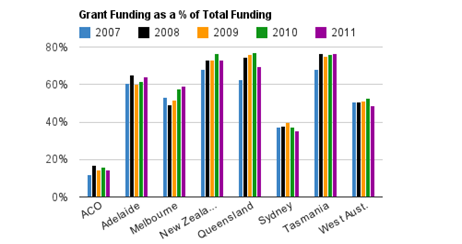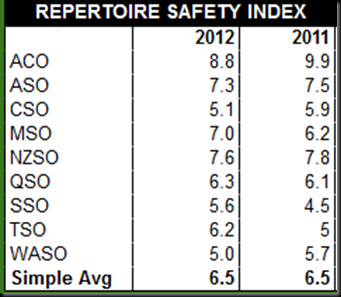Pianist Michael Kieran Harvey has fired an impressive salvo at Australia’s arts organisations, which is well worth a read. His observations include the following: Classical music is in the grip of cultural cringe, Harvey says, where there is no Australian conductor as head of an Australian orchestra, and music by local composers accounts for just 7 per cent of concert seasons. It’s an interesting observation, and although his figure of 7% looks a little low it’s probably about right, particularly for 2011 when the orchestra with the largest program (Sydney) had a meagre 6% local content. My data is as follows:

One particularly notable observation was that as these orchestras are funded in part by the taxpayer, there should be a much greater onus on them to perform works by Australian composers. This is a fair point, although I think he’s set his benchmark a bit high by claiming that the number should be 50%. As this table shows, no-one has got remotely close to this. One thing that might be of concern is that when the ASO went with 20% local content in 2011, they saw a 13% slide in ticket sales in that year. No doubt there were many reasons for this, but presumably the concept of 50% local content might cause a few palpitations. Whilst on this subject – I haven’t finished crunching the numbers on the 2013 orchestral programs yet, but early indications are that local content has fallen even further – ASO 6%, QSO 5%, SSO 5%, WASO 3%. So, I'm not too sure about his target of 50%, but fair call about the cultural cringe factor.






